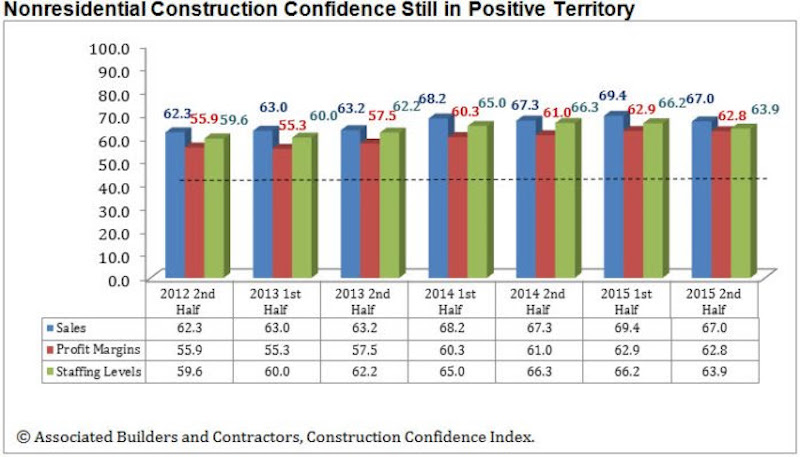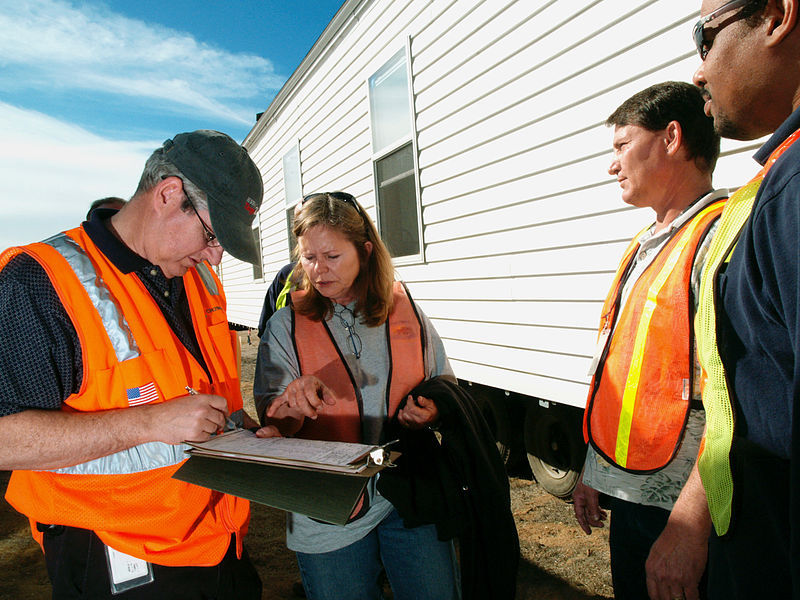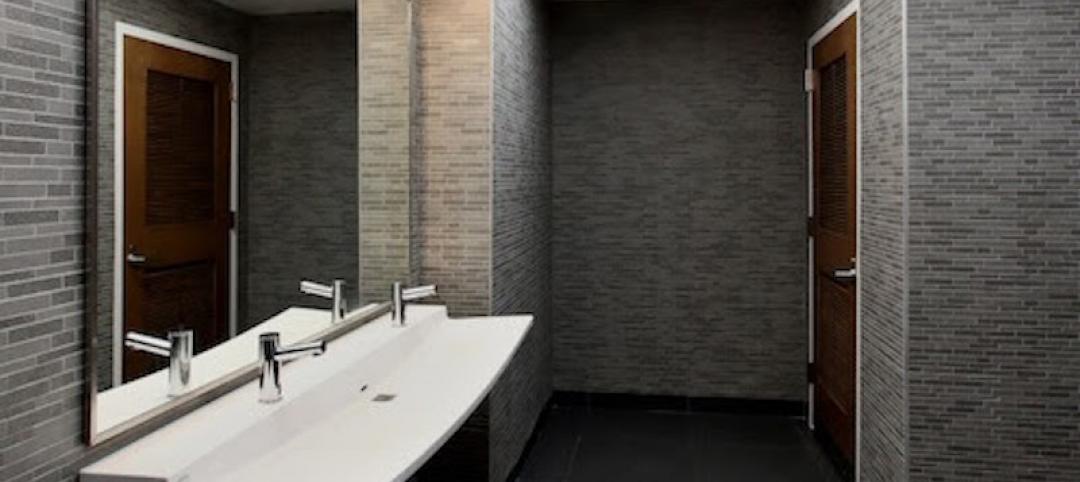Associated Builders and Contractors' (ABC) Construction Confidence Index (CCI) showed a slight dip in the second half of 2015, although all three components of the index showed optimism for continued economic growth. The diffusion index measures forward-looking construction industry expectations in sales, profit margins and staffing levels, with readings above 50 indicating growth.
"An abundance of considerations have rendered the typical nonresidential construction executive somewhat less confident regarding near-term business prospects," said ABC Chief Economist Anirban Basu. "These include jittery financial markets, stubbornly low commodity prices, unpredictable Federal Reserve policy and rising consumer delinquencies and corporate defaults. Outside of financial concerns, the industry is concerned by skilled construction worker shortages, the unpredictable presidential election cycle and expanding geopolitical risk. Still, construction executives collectively expect nonresidential construction's impressive recovery to persist, in large measure because backlog remains high.
"Still, construction executives are well aware that the business cycle can end abruptly," warned Basu. "Asset prices continue to be unsettled and credit availability could tighten going forward if markets remain wobbly. The direction of interest rates is naturally of enormous concern to construction leaders since real estate and construction are among the sectors most sensitive to shifts in the cost of capital and the availability of financing."
Here is a snapshot of the results for the most recent survey administration:
- Sales expectations fell from 69.4 to 67.0;
- Profit margin expectations edged lower from 62.9 to 62.8;
- Staffing level intentions dipped from 66.2 to 63.9.

Related Stories
Market Data | May 2, 2017
Nonresidential Spending loses steam after strong start to year
Spending in the segment totaled $708.6 billion on a seasonally adjusted, annualized basis.
Market Data | May 1, 2017
Nonresidential Fixed Investment surges despite sluggish economic in first quarter
Real gross domestic product (GDP) expanded 0.7 percent on a seasonally adjusted annualized rate during the first three months of the year.
Industry Research | Apr 28, 2017
A/E Industry lacks planning, but still spending large on hiring
The average 200-person A/E Firm is spending $200,000 on hiring, and not budgeting at all.
Architects | Apr 27, 2017
Number of U.S. architects holds steady, while professional mobility increases
New data from NCARB reveals that while the number of architects remains consistent, practitioners are looking to get licensed in multiple states.
Market Data | Apr 6, 2017
Architecture marketing: 5 tools to measure success
We’ve identified five architecture marketing tools that will help your firm evaluate if it’s on the track to more leads, higher growth, and broader brand visibility.
Market Data | Apr 3, 2017
Public nonresidential construction spending rebounds; overall spending unchanged in February
The segment totaled $701.9 billion on a seasonally adjusted annualized rate for the month, marking the seventh consecutive month in which nonresidential spending sat above the $700 billion threshold.
Market Data | Mar 29, 2017
Contractor confidence ends 2016 down but still in positive territory
Although all three diffusion indices in the survey fell by more than five points they remain well above the threshold of 50, which signals that construction activity will continue to be one of the few significant drivers of economic growth.
Industry Research | Mar 24, 2017
The business costs and benefits of restroom maintenance
Businesses that have pleasant, well-maintained restrooms can turn into customer magnets.
Industry Research | Mar 22, 2017
Progress on addressing US infrastructure gap likely to be slow despite calls to action
Due to a lack of bipartisan agreement over funding mechanisms, as well as regulatory hurdles and practical constraints, Moody’s expects additional spending to be modest in 2017 and 2018.
Industry Research | Mar 21, 2017
Staff recruitment and retention is main concern among respondents of State of Senior Living 2017 survey
The survey asks respondents to share their expertise and insights on Baby Boomer expectations, healthcare reform, staff recruitment and retention, for-profit competitive growth, and the needs of middle-income residents.

















